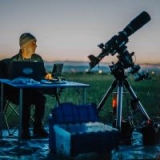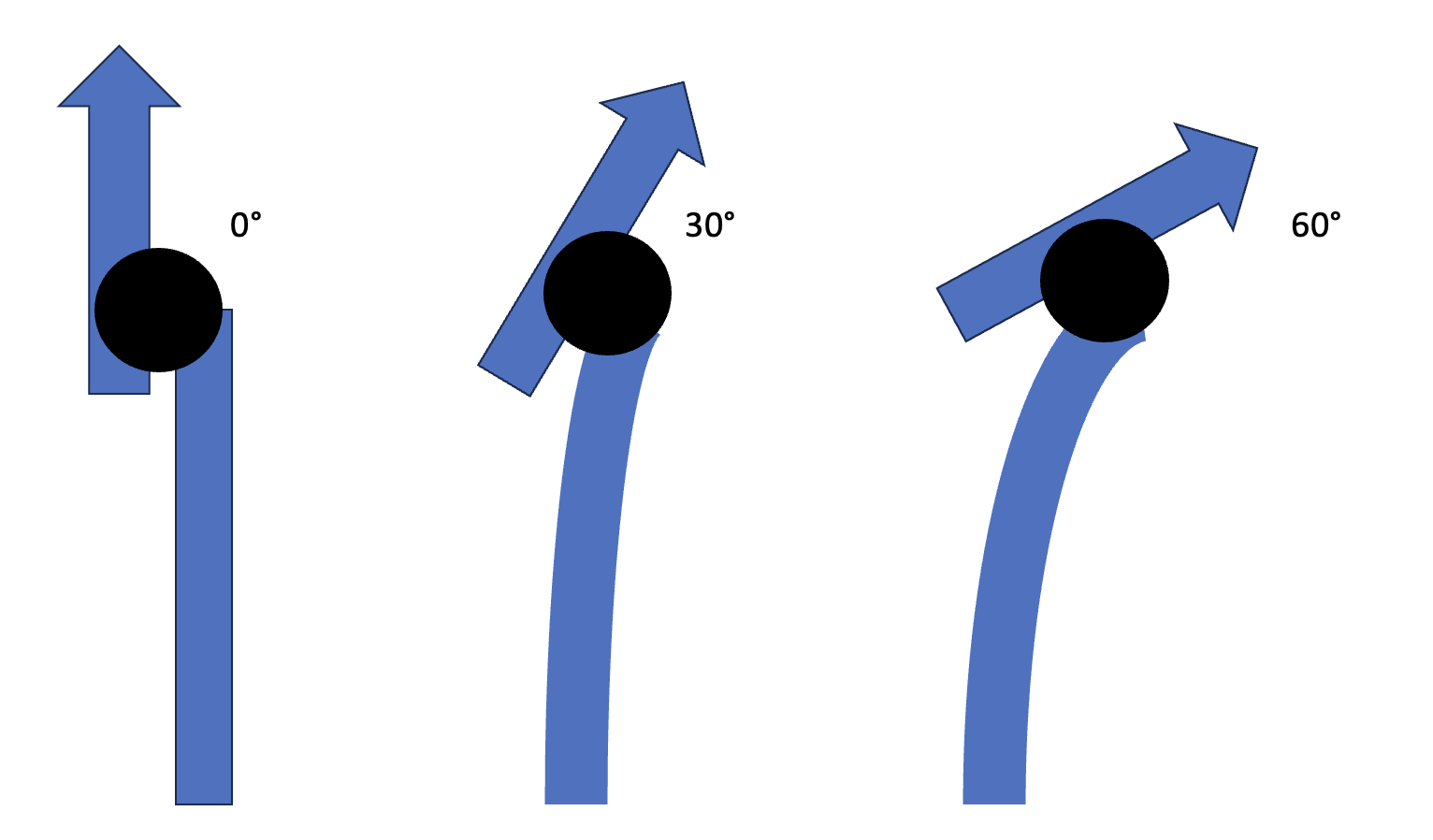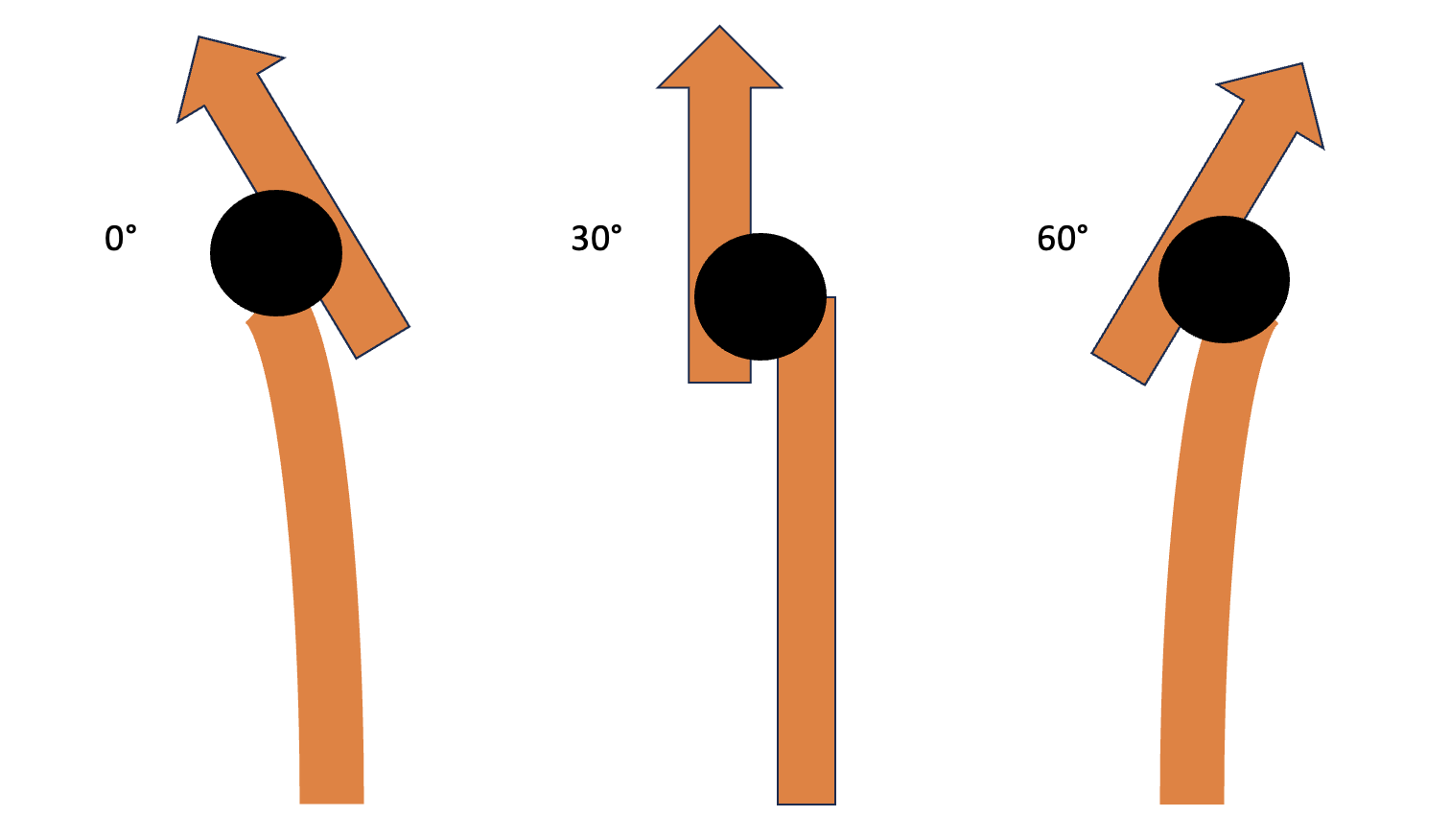INDI Library v2.0.7 is Released (01 Apr 2024)
Bi-monthly release with minor bug fixes and improvements
Suggestion to avond bending / flexing during polar alignment
When performing a polar alignment, there are a few choices:
- East / West
- Rotation magnitude
- Speed
- Manual slew
But regardless of certain choices, the mount always starts in the 'pointed to the pole' position and then performs a number of movements from this position. Let's choose East and 30° in this example.
The pier or tripod is not rigid and will therefore bend / flex more and more:
And exactly at the place where the pier or tripod has the most bending / flexing at 60°, adjustments must be made.
So wouldn't it be better to start at -30° to then go to 0° and end at 30° ?
Attachments:
Please Log in or Create an account to join the conversation.
- Hy Murveit
-

- Away
- Administrator
-

- Posts: 1224
- Thank you received: 566
Replied by Hy Murveit on topic Suggestion to avond bending / flexing during polar alignment
Sorry, I'm not sure I fully understand your suggestion, however you are free to begin the polar-alignment routine pointing from anyway. If you wish to start 30º East of the meridian and then slew West 30º twice, you can. So, when you start up, slew the scope to wherever you want and begin. That said, if you are not pointing near the pole, you will very likely have major issues (your telescope bumping into your tripod/pier if you slew across the horizon by 60º). In fact, you should get a warning about that from the polar-alignment software. If you're pointing close to the pole, that is not an issue.
Hy
Please Log in or Create an account to join the conversation.
Replied by Fitchie on topic Suggestion to avond bending / flexing during polar alignment
But what I wanted to say is that when the polar alignment starts pointing to the pole or near Polaris, the RA axis starts at 0° or 00:00, then moves to +30° or 02:00 and finally ends at +60° or 04:00. There is a lot of bending / flexing in that place and this negatively affects the alignment.
This can be avoided in a very simple way by starting at -30° or 22:00 and ending at +30° or 02:00. As you say it doesn't really matter where you start the procedure. But by default most telescopes start from their park position aimed to the pole or near Polaris.
It would therefore be useful to have the option to 'align symmetrically' or alternatively 'enter start position'. Then there is no need to manually go to another position at the start of the polar alignment.
And since everyone with a non-fixed setup has to polar align every time, that would be a welcome (and not that hard to code) feature.
Mockup:
Attachments:
Please Log in or Create an account to join the conversation.
- Jasem Mutlaq
-

- Online
- Administrator
-

Replied by Jasem Mutlaq on topic Suggestion to avond bending / flexing during polar alignment
Please Log in or Create an account to join the conversation.
Replied by Fitchie on topic Suggestion to avond bending / flexing during polar alignment
Do you agree with this approach?
1. Polar alignment with QHY polemaster
2. Polar alignment with EKOS
After this we can say that polar alignment errors are minimal and can be neglected
3. Home mount
4. Capture / solve / slew / guide Polaris
5. Capture / solve coordinates at -60° / -30° / 0° / +30° / +60° magnitude
Perhaps Polaris is not a good choice, please give your feedback if you want a different object.
Please Log in or Create an account to join the conversation.
- Jasem Mutlaq
-

- Online
- Administrator
-

Replied by Jasem Mutlaq on topic Suggestion to avond bending / flexing during polar alignment
1. Test with regular Ekos PAA (from home position)
2. Test again but slew mount 30 degrees WEST then start PAA with EAST selected, this would be symmetrical.
Record results for both (perhaps repeat each more than once to account for variations)
3. Test with QHY Pole master and record result.
Do not correct mount errors at any point, just record the polar error reported by each method.
Please Log in or Create an account to join the conversation.
- Gonzothegreat
-

- Offline
- Moderator
-

- Posts: 2256
- Thank you received: 223
Replied by Gonzothegreat on topic Suggestion to avond bending / flexing during polar alignment
If either are bending or flexing to a point where it's interfering with the polar alignment, I would recommend to worry about the pier construction or buy a more sturdy tripod. Before you worry about anything else software side.
Please Log in or Create an account to join the conversation.
- David Allmon
-

- Offline
- Elite Member
-

- Posts: 194
- Thank you received: 20
Replied by David Allmon on topic Suggestion to avond bending / flexing during polar alignment
Please Log in or Create an account to join the conversation.
Replied by Fitchie on topic Suggestion to avond bending / flexing during polar alignment
- the entire setup is perfectly balanced
- the mount/pier is completely rigid
But even the most expensive mounts/piers never will be completely rigid and in addition a small imbalance is desired to improve the guiding, so that there is always a small force against the leading or trailing edge of the worm.
As long as worm gear mounts are used without spring pressure on the worm, probably the backlash as result of using symmetrical positions before & after the meridian, will make a greater contribution to the PAA inaccuracy than the flexing caused by the imbalance. And of course FL and the weight of the telescope will play a major role.
However, with spring loaded mounts there seems to be an advantage by using symmetrical positions before & after the meridian to polar align, no matter how small the flexing / bending may be.
I haven't had the chance to take measurements yet because of the bad weather, but I will soon...
Please Log in or Create an account to join the conversation.
Replied by Fitchie on topic Suggestion to avond bending / flexing during polar alignment
PAA #1
0° .. -60°
Non-symmetrical
Draconis
Solution coordinates
RA (11h 33m 46s)
DEC ( 68° 54' 44")
Telescope Coordinates
RA (11h 32m 45s)
DEC ( 69° 12' 16")
Target Coordinates
RA (11h 32m 45s)
DEC ( 69° 12' 16")
PAA #2
0° .. -60°
Non-symmetrical
Draconis
Solution coordinates
RA (11h 34m 02s)
DEC ( 68° 55' 58")
Telescope Coordinates
RA (11h 32m 46s)
DEC ( 69° 12' 16")
Target Coordinates
RA (11h 32m 45s)
DEC ( 69° 12' 16")
PAA #3
-30° .. +30°
Symmetrical
Draconis
Solution coordinates
RA (11h 34m 31s)
DEC ( 68° 58' 32")
Telescope Coordinates
RA (11h 32m 46s)
DEC ( 69° 12' 16")
Target Coordinates
RA (11h 32m 45s)
DEC ( 69° 12' 16")
PAA #4
-30° .. +30°
Symmetrical
Draconis
Solution coordinates
RA (11h 34m 38s)
DEC ( 68° 58' 29")
Telescope Coordinates
RA (11h 32m 46s)
DEC ( 69° 12' 16")
Target Coordinates
RA (11h 32m 45s)
DEC ( 69° 12' 16")
Attachments:
Please Log in or Create an account to join the conversation.
Replied by nou on topic Suggestion to avond bending / flexing during polar alignment
Please Log in or Create an account to join the conversation.
Replied by Fitchie on topic Suggestion to avond bending / flexing during polar alignment
Prior to each test, I did run the PAA.
Please Log in or Create an account to join the conversation.







